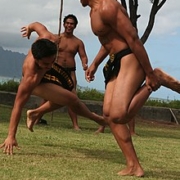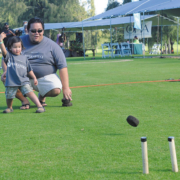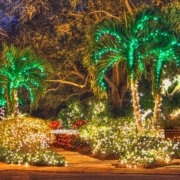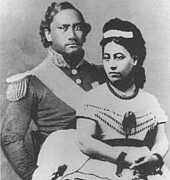The 4th of July is pretty much the quintessential summer holiday. Everyone heads to their nearest beach, throws some burgers and ‘dogs on the grill, and spends the day soaking up the summer sun before ending the night with a good fireworks show. It’s a day spent enjoying the company of family and friends, and marveling at how cool it is when things explode into colorful showers of sparks in the sky. The 4th of July is no different on Kaua’i, and to help you celebrate we’ve put together a short list of family-friendly events that will help you kick off your holiday weekend with a bang!
The Bad News: Kaua’i’s 33rd Annual Concert in the Sky is Cancelled
Each year Kaua’i Hospice puts on the annual Concert in the Sky in Lihu’e as one of their major fundraisers. The event typically has live music and performances, delicious food, water slides, a keiki fun zone, plenty of artisan craft vendors, and an elaborately choreographed fireworks show at the end of the night. Unfortunately, this year’s event has been cancelled due to ongoing construction at Vidinha Stadium, and the risk of igniting flammable construction materials with the fireworks.
While it’s certainly a major disappointment for locals and visitors alike, there’s still plenty happening on the island to make your weekend festive and fun!
The Good News: There’s Still Plenty of Shenanigans to Get Into

Quick Facts for America’s Most West Freedom Fest!
Topping our list of 4th of July activities this year is America’s Most West Freedom Fest hosted down at the Pacific Missile Range Facility in Kekaha. Kicking off on Thursday, July 3rd at 6pm, AMWFF will have live music all night, craft and food vendors, a keiki fun zone, and an awesome fireworks show at 9:30pm. This year’s performers include Moloka’i’s own 7 piece island-reggae group High Watah, and island-hip hop star Spawnbreezie! You’ll also have the chance to see performances by Miss Aloha Hula 2025 Jaedyn Pavao and her halau Ka Lei Mokihana o Leināʻala. The event is FREE to attend for all U.S. citizens, and gates open at 4pm. For more information check out Pacific Missile Range’s website here!
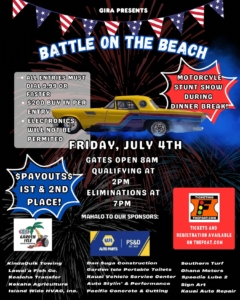
Garden Isle Racing Association’s “Battle on the Beach” flyer!
If you’re more mechanically than musically inclined, and don’t mind a drive down to the South Shore, the Garden Isle Racing Association is putting on their 2-day battle on the beach drag race tournament Friday, July 4th and Saturday, July 5th. Tickets are $15 for guests 12 and up, and kids 11 and under get in free! Gates open at 8am to come and see the cars up close and in person, qualifying races start at 2pm, and elimination rounds start at 7pm, with a motorcycle stunt show midway through. If you like what you see Friday night, be sure to come back down on Saturday to watch the fastest 8 dragsters compete for the cash prizes! For tickets you can click here, and for more information on the races you can visit Garden Isle Racing Association’s Facebook page.
For those of us looking for something a little quieter and more laidback, the First Friday Art Night at Hā Coffee in Lihu’e will have live music, live painting, an open mic event, and a beer garden with delicious local food vendors! The event runs from 5-8pm, is free to attend, and lets you immerse yourself in Kaua’i’s local art community through live performances. For more information you can click here!
Forget About Drag Racing and Live Music, Can I Set Off My Own Fireworks That Night?
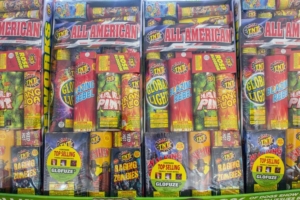
Consumer fireworks packages do NOT require a permit on Kaua’i.
If you’d like to have your own celebrations, consumer fireworks ARE allowed on Kaua’i for the 4th of July! There are, of course, some rules: fireworks are only to be ignited from 1pm to 9pm on the 4th, and certain firecrackers require a permit that you can purchase through the Kaua’i Fire Department. Most of the common fireworks such as fountains, ground spinners, sparklers, smoke bombs, and mini tanks do not require you to have a permit, but firecrackers like the Black Cat branded ones will require a permit. Additionally, fireworks are ONLY to be lit on private property, and you should make sure to have a hose or bucket of water nearby for proper dousing and fire safety. For a more in depth overview of fireworks rules, you can visit the Kaua’iNow website here.
We hope everyone has a safe and happy 4th of July this year, however you choose to celebrate! We’ll certainly be spending the day swimming, grilling, and relaxing with our loved ones before lighting a few sparklers of our own!

